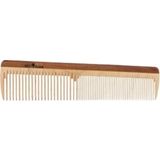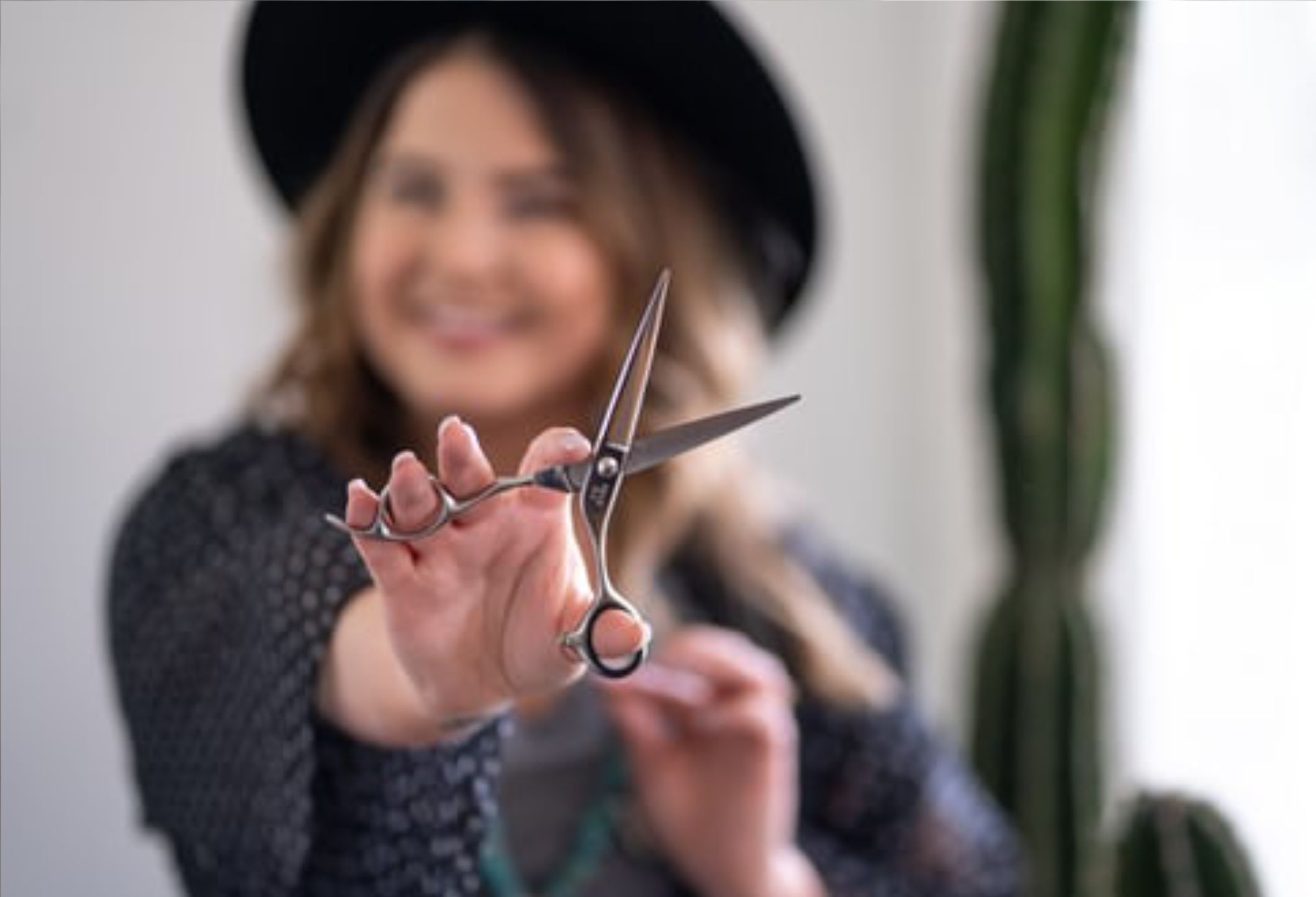At-home Hair Cuts
Tips from a professional
Please keep in mind the following information regarding cutting your own hair. It is not recommended to cut your own hair as it may lead to a bad hairstyle or damaged hair. However, it may not always be feasible to visit a hairdresser due to various reasons, or you may feel the urge to do it yourself. Find out here what tasks you can perform on your own and what you should leave to a trustworthy hairdresser.
The general rule:
- if you want a perfect hairstyle or a change in style, let the professionals handle it.
- Only cut the hair when it is dry.
- Use only high-quality hair scissors and trimmers
What is to be considered:
- never use blunt scissors or ones that are not specifically designed for cutting hair, such as craft scissors or nail scissors. These can be quite harmful to your hair. If you use the wrong tools, it may result in split ends and damaged hair, which will require a professional to fix it.
- It is best to get help from someone else when cutting the back sections of your hair.
- Unlike hairdressers who cut hair when it is wet, beginners should cut their hair when it is dry. This makes it easier to see how the hair needs to be cut since it falls naturally. Especially when cutting the bangs, make sure the hair is dry to ensure a precise cut.
- The best time to cut your hair at home is a few hours after washing it. Also, avoid using any styling products such as mousse or hairspray before the haircut.
- If you do not have bangs but would like to get them, it is highly recommended to wait for a professional appointment rather than cutting them yourself. The tips provided here are only for trimming an existing fringe.
What you need:
- A pair of sharp hair scissors
- For short hair, a hair trimmer or hair clipper
- A comb
- A large mirror
- A towel/cape for the shoulders
- Good lighting
Instructions for cutting tips:
- Comb your hair and part it in the middle. Place the 2 sections of hair forward over your shoulders.
- Separate a 2-3 cm wide strand of hair, comb it through again and pull it down tightly with your index and middle fingers.
- Now cut the hair below the fingers. Hold the scissors at a slight angle, with the tip pointing upwards towards your finger, and cut “mini spikes” into the hair in small steps. This way you avoid blunt edges.
- Keep checking the progress in the mirror.
- Work your way up strand by strand and repeat the process on the other side.
- Make sure that the 2 sides have a uniform length at the end and make careful adjustments if necessary.
Instructions for trimming a fringe:
- Comb the fringe as straight as possible to see how much of the length needs trimming and how long or short the fringe should be.
- Separate the bangs from the remaining hair. Tie the rest of the hair back neatly or use hair clips.
- To avoid cutting off too much, gently shake the bangs with your fingers so that the hair falls naturally. Now take the fringe section by section between your index and middle finger and hold it upwards. Place your fingers where the cut will be made.
- Position the scissors vertically and only cut a few millimetres at a time. This prevents cutting too much hair at once.
- Keep checking the progress in the mirror and make adjustments where necessary.
Instructions for removing split ends:
- Comb the hair and divide it into sections of about 1 cm wide. Secure the rest of the hair with a hair clip. Start at one side of the parting.
- Now twist the strand of hair tightly. This means that the split ends will stick out and you can carefully cut away the protruding ends of the hair, working from top to bottom.
- Secure the section that has been cut on the opposite side of the parting with a hair clip. Continue the cutting technique section by section.
- It is best to get help from someone else when cutting the back sections of your hair.
Instructions for touch-ups on the sides and at the neck:
- Adjust the hair trimmer or clipper to the desired length. To be on the safe side, start with a larger length setting and work your way down to the shorter desired length.
- Work carefully from bottom to top.
- When trimming short hair above the ears, use a comb to ensure a clean-cut edge.
- It is best to get help from someone else when cutting the back sections of your hair. Attachments are not used on the neck.
Related products
-

KostKamm Wooden Comb, 1 Pcs.
- Wood, coarse-fine 18 cm
- Suitable particularly for straight hair
- Non static
£19.65Delivery by August 29
Magazine Articles:
-
Great Britain: Free standard delivery from £79.90
-
Free
returns -
1 free sample with every order
More than 8.550 products
